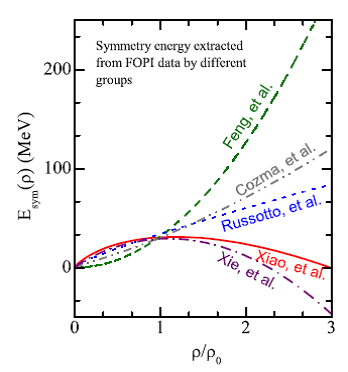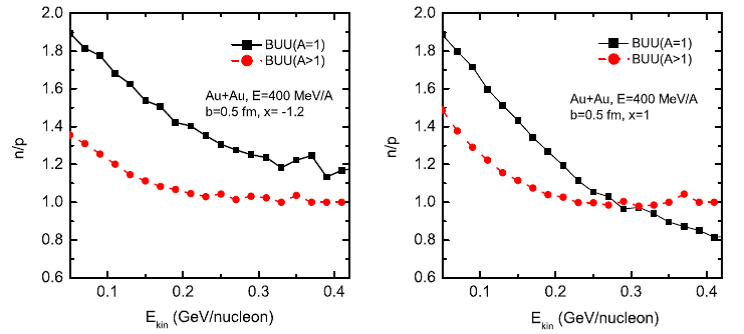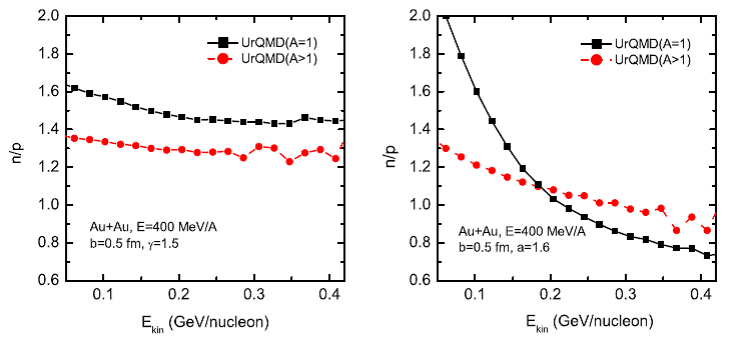The researchers of Nuclear Theory Group at the Institute of Modern Physics, Chinese Academy of Sciences (IMP) have investigated the effect of nuclear symmetry energy at supradensities on the isospin-fractionation (IsoF). It is pointed out that the normal or abnormal isospin-fractionation of energetic nucleons can be a qualitative probe of nuclear symmetry energy at supradensities. Although nuclear symmetry energy and its slope at normal density of nuclear matter from recent 28 analyses of terrestrial nu-clear laboratory experiments and astrophysical observations have been roughly pinned down, recent interpretations of FOPI and FOPI-LAND data by different transport models give divergent density-dependent symmetry energy at supradensities. The divergence is shown in Fig.1. The studies show that with positive/negative symmetry potential at supradensities (i.e., values of symmetry energy increase/decrease with density above saturation density), for energetic nucleons, the value of neutron to proton ratio of free nucleons is larger/smaller than that of bound nucleon fragments (shown in Fig.2). On account of the same qualitative results produced by both UrQMD and IBUU, the present study is less model dependent. Compared with extensively studied quantitative observables of nuclear symmetry energy, the normal or abnormal isospin-fractionation of energetic nucleons can be a qualitative probe of nuclear symmetry energy at supradensities. The results have been published in Physics Letters B738 (2014)397–400. http://www.sciencedirect.com/science/article/pii/S0370269314007345 
Fig.1 Density dependent nuclear symmetry energy extracted from FOPI and FOPI-LAND data by different groups (Image by IMP). 

Fig.2 Neutron to proton ratio n/p of free and bound nucleons as a function of nucleon kinetic energy in the central 197Au+197Aureaction at a beam energy of 400MeV/A with positive (left) and negative (right) symmetry potentials at supra-saturation densities. Simulated with the IBUU and the UrQMD transport models (Image by IMP). |

